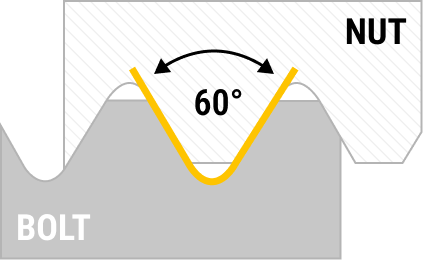
S. I. Thread
The S.I. thread is a historical type of thread and is considered a precursor to the metric ISO thread. The abbreviation S.I. stands for 'système international,' meaning 'International System' in English. The S.I. thread was defined at the 'International Congress for the Standardization of Threads' in 1898. At this congress, engineers from France, Germany, Belgium, and Switzerland met to advance the standardization of threads beyond regional borders and across manufacturers. The S.I. thread was an important step in this direction.
The S.I. thread is a metric thread, closely resembling the metric ISO thread in its dimensions. The thread profile, in the form of an equilateral triangle and the resulting 60° flank angle, also originates from the S.I. thread. However, the S.I. thread covers a different range of sizes, from 6 mm to 80 mm.
The thread designation for the S.I. thread is composed of the nominal diameter and the pitch. The abbreviation for this type of thread can simply be given as SI. Thus, a clear designation in the form of SI 8 x 1.25 is possible.
In the thread table for the S.I. thread, in addition to the nominal diameter – defined here as the screw diameter – and the pitch, some other values are also listed. These include the core hole diameter, which indicates the required diameter for the pilot hole when threading. Also part of the thread table for the S.I. thread are the key width and the clear width of the nut.
